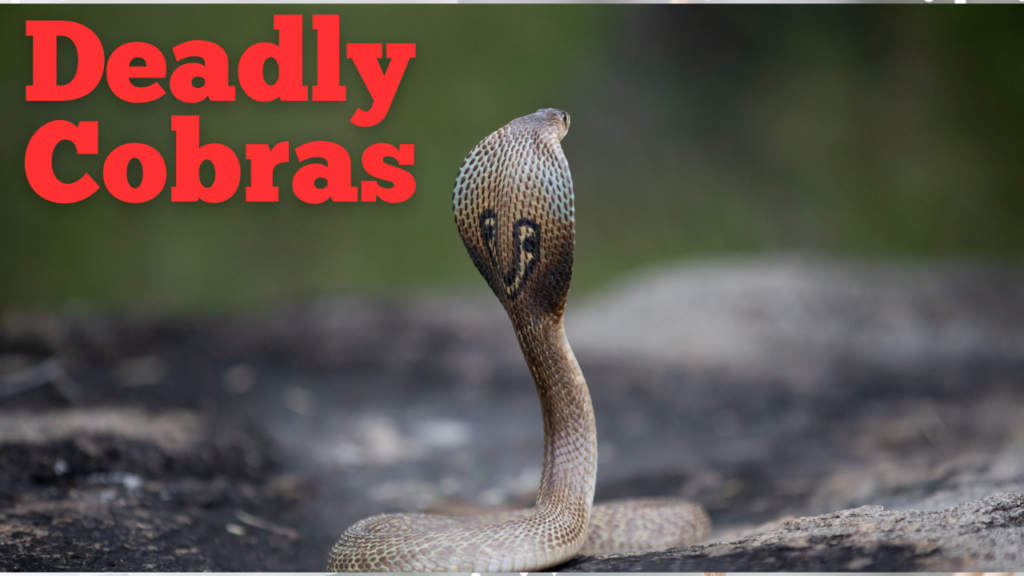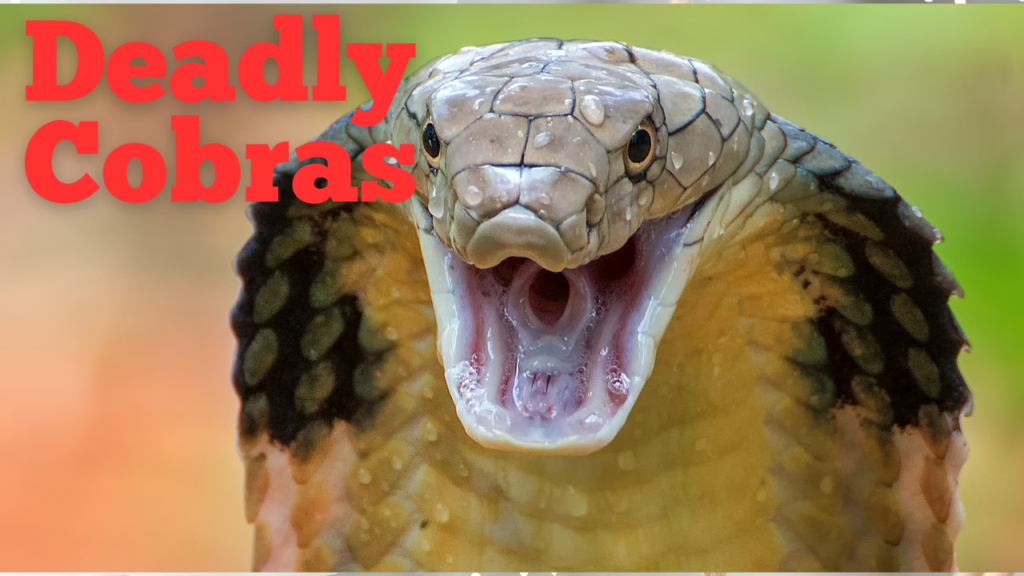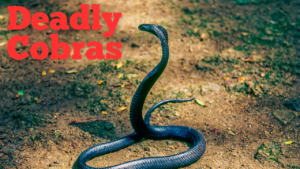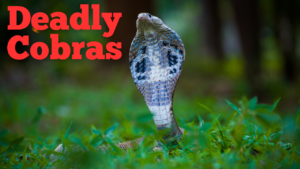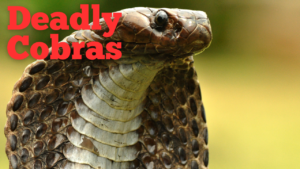Venomous Enigma: Unveiling the World of Deadly Cobras
Introduction
Cobras, a group of highly venomous snakes known for their iconic hooded appearance and menacing hiss, are among the most feared and respected reptiles in the world. These snakes belong to the family Elapidae and are found primarily in Africa and Asia. Their potent neurotoxic venom, combined with their striking physical features, has made them the subject of fascination and dread for centuries. In this article, we will explore the world of deadly venomous cobras, their varieties, and the impact they have had on human culture and biology.
Cobras are one of the most feared and respected snakes in the world. They are known for their deadly venom, their ability to raise their heads and hoods, and their fierce territoriality. There are over 300 species of cobras found in Asia, Africa, and the Middle East. Some of the most common and dangerous species include the king cobra, the Indian cobra, and the Egyptian cobra.
Cobras are venomous snakes, but their venom varies in potency depending on the species. The king cobra, for example, has one of the most potent venoms in the world. A single bite from this snake can deliver enough venom to kill an adult elephant. Cobra venom is neurotoxic, meaning that it attacks the nervous system. This can lead to paralysis, respiratory failure, and even death.
Cobras are also known for their ability to hood. This is a defensive mechanism that the snake uses to make itself appear larger and more threatening. When a cobra hoods, it spreads out its ribs and flattens its hood, which is the skin on the back of its head. This makes the snake look much larger than it actually is and can deter predators.
Cobras are territorial snakes, and they will defend their territory aggressively. If a cobra feels threatened, it will strike at the intruder. Cobras are also known to strike without warning, so it is important to be cautious around these snakes.
Cobras are fascinating and dangerous creatures. They play an important role in the ecosystem by helping to control populations of rodents and other small animals. However, it is important to respect cobras and to avoid contact with them. If you encounter a cobra, it is best to back away slowly and avoid making any sudden movements.
Cobra Species
Several species of cobras are spread across Africa and Asia. Some of the most notable ones include:
1.1 Indian Cobra (Naja naja):
- Range: Found throughout the Indian subcontinent.
- Description: The Indian cobra is one of the most iconic and well-known cobra species. It features a single, circular hood and is typically brown or black with a distinct spectacle-shaped marking on the back of its hood.
- Venom: Indian cobra venom is primarily neurotoxic, affecting the nervous system and leading to paralysis if not treated promptly.
1.2 King Cobra (Ophiophagus Hannah):
- Range: Native to Southeast Asia and parts of the Indian subcontinent.
- Description: King cobras are the largest venomous snakes in the world, capable of reaching lengths of up to 18 feet (5.5 meters). They are known for their distinct hood, which is narrower in comparison to other cobras.
- Venom: King cobra venom is primarily neurotoxic and cardiotoxic, and a single bite can deliver a lethal dose to a human within hours.
1.3 Egyptian Cobra (Naja haje):
- Range: Found in North Africa and parts of the Middle East.
- Description: The Egyptian cobra is known for its attractive coloration, with shades of yellow, tan, and brown. It can spread a broad hood when threatened.
- Venom: Egyptian cobra venom contains powerful neurotoxins and cytotoxins, causing paralysis and tissue damage.
1.4 Cape Cobra (Naja nivea):
- Range: Native to southern Africa, including South Africa and Namibia.
- Description: Cape cobras are highly venomous and have variable coloration, often appearing yellow, light brown, or gray. They are known for their potent venom and the ability to raise a hood when threatened.
- Venom: Cape cobra venom primarily contains cytotoxins and neurotoxins, affecting both the nervous system and tissues.
-
Venom and Lethality
Cobra venom is a complex cocktail of proteins and enzymes designed to immobilize, kill, and digest their prey. The primary components of cobra venom are neurotoxins, which affect the nervous system, leading to paralysis, respiratory failure, and potentially death if untreated. Additionally, cobras may possess cytotoxins, which damage tissues and can lead to severe local effects at the site of the bite.
The potency of cobra venom varies among species. The king cobra, for example, delivers an exceptionally lethal bite that can kill an adult human within hours. In contrast, other cobras may not be as deadly, but their venom still poses a significant threat.
-
Human-Cobra Conflict
Cobras have been a part of human culture and mythology for centuries, often representing both fascination and fear. These snakes have had a significant impact on human populations, particularly in regions where they are endemic.
- Snakebites: Cobras are responsible for a considerable number of snakebite incidents, with thousands of people bitten each year. Many of these bites are often due to accidental encounters, as cobras can be found in and around human settlements.
- Antivenom Production: The venom of cobras has also been instrumental in the production of antivenom. Researchers have developed effective antivenoms to counteract cobra bites, significantly reducing mortality rates.
-
Conservation and Protection
Despite their deadly reputation, cobras, like many other snake species, face numerous threats, including habitat loss, persecution, and illegal trade. Conservation efforts are crucial to protect these iconic snakes and maintain the balance of their ecosystems.
-
Conclusion
Deadly venomous cobras are awe-inspiring creatures that have left an indelible mark on human culture, biology, and medicine. While their venom can be deadly, these snakes play an essential role in their ecosystems. Understanding and respecting these creatures, while also working towards their conservation, is crucial to ensuring their survival and the safety of humans who may encounter them in their natural habitats.

